When the starters gun for the 2022 election went off, AFR cartoonist David Rowe saw it like this:
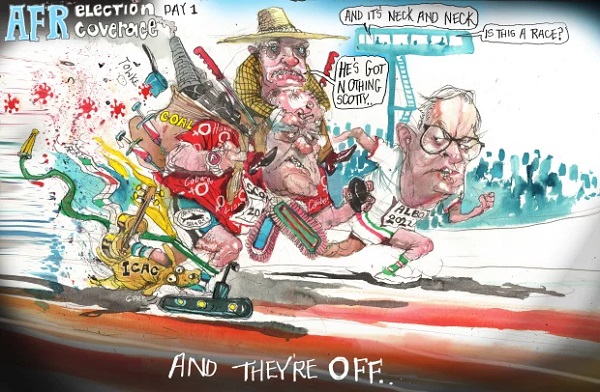
Within minutes the scene had changed:
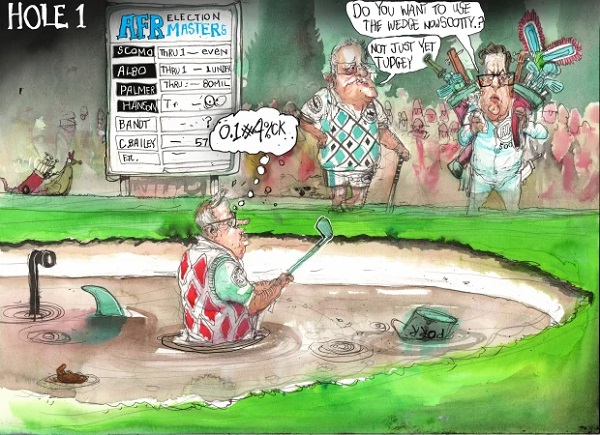
Back in February Ray Martin saw it like this (harvested from Twittersphere):
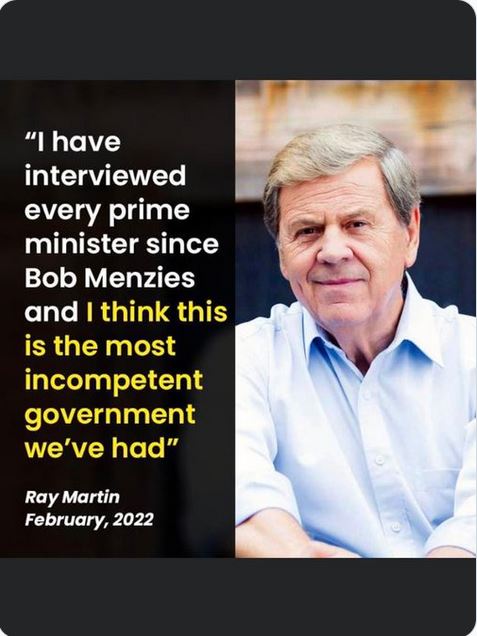
Yet they claim to be the better economic managers.
With the media hungry for colour and movement rather than substance, let’s see what actually happened in the ABS Labour Force figures for March 2022:
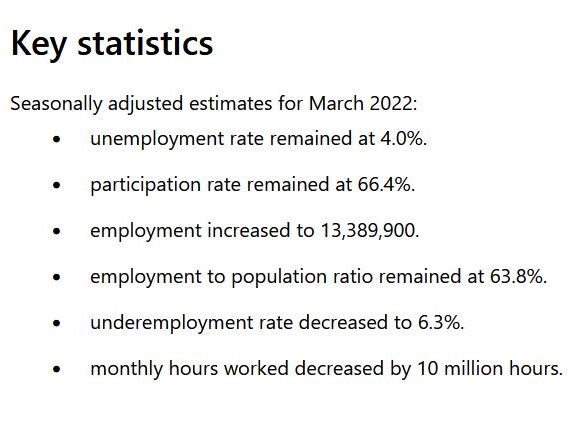
Here are the changes in numbers and percentage change:
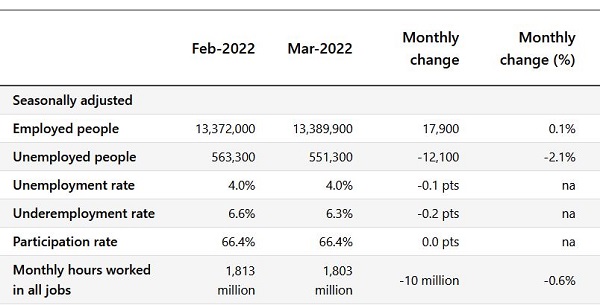
Reasons for our high employment and low unemployment, include these, from CommSec economist Ryan Felsman:
- the Morrison government fiscal stimulus of $97 billion dollars
- COVID itself created extra work
- increased funding of infrastructure
-
borders were closed to backpackers and migrants, increasing demand for local workers
He could have mentioned also that early access to superannuation allowed around $40 billion to be released into the consumer economy. Furthermore, Australians love of travel meant that prior to COVID Australians spent more overseas than tourists coming here. During COVID much of that money was spent by travel-loving Australians within the Australian economy.
Following the ABS release Roy Morgan published a paper Real unemployment in Australia is far higher than claimed by the ABS, and high under-employment keeps a lid on the wage growth of workers identifying an Omicron-related factor that has been missed by all other commentators in:
-
The first Omicron wave began in early December and led to infections peaking in mid-January at over 700,000 before declining rapidly over the next few weeks and bottoming in February. A second Omicron wave began in early March and is still ongoing with tens of thousands of new cases every day.
The high caseload means over 450,000 Australians are currently forced into week-long isolation because of being infected with the virus, and many hundreds of thousands more, such as family members living in the same house, are forced into periods of isolation due to being close contacts of those who are infected.
The forced isolation of many employees is in turn forcing businesses to hire more workers on part-time hours. In March part-time employment increased by 289,000 to a near-record high of over 4.7 million. This is where all the employment growth in the labour market has come from over the last few months. (Emphasis added)
Not a pretty picture at all – a highly stressed labour market in a highly stressed community.
This shows how one number, the ABS unemployment number which counts one hour per fortnight as employed, as trivial and misleading.
Moreover Roy Morgan finds the levels of unemployment and underemployment significantly higher than the ABS, comprising more than 2.3 million Australians (16.2% of the workforce):
- There were 1.13 million Australians (7.8% of the workforce) unemployed in March and even more, 1.23 million, under-employed (8.4% of the workforce). This compares to the ABS estimate of 563,000 unemployed Australians (4.0% of the workforce) and 926,000 under-employed (6.6% of the workforce).
Anthony Albanese is blessed with arguably one of the best economic team assembled by a political party in Australia’s history in Jim Chalmers and Katy Gallagher, assisted by Stephen Jones, Andrew Leigh and more. With them Albanese does not have to remember every economic number. As leader he has 20 other portfolios to oversee.
It is fair to say, I think, that working life as experienced by workers has deteriorated markedly since Howard was elected as prime minister. This is Labor’s and Albanese’s overriding concern.
One of his major concerns is the lousy pay many people get, the inequality of pay for the same work, and insecure work, which Sally McManus, Secretary of the Australian Council of Trade Unions, reckons affects 4 million workers.
Insecure work is a concept which goes beyond casual work, as Katy Gallagher explained on RN Drive the other night.
She explained, as Labor frontbenchers have many times, including Jim Chalmers at the National Press Club in his budget reply, how Labor plans to remake Australia, with dignity and opportunity for all, and where restoration to a budget balance can happen 15 years earlier than under the present government policies as reflected in the budget.
Chalmers had numbers galore, and spoke for nearly half an hour from memory without looking at the script. He said that in real terms average wages had reduced by $3200 per annum in the last few years.
Alison Pennington, Centre for Future Work and Ros Knight, clinical psychologist talk about an extended concept of insecure work which now encompasses half of all jobs in Australia. This is spelled out by Jim Stanford and Mark Dean in Insecure work isn’t a made-up problem. It isn’t normal. And it isn’t inevitable:
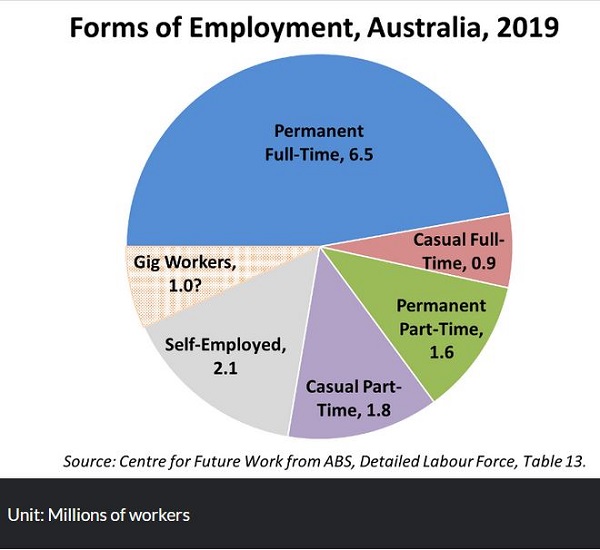
Linda Mottram on ABC RN spoke to Saul Eslake about “Better economic managers”: a factcheck.
Unemployment was on average 8.7% under Hawke and Keating, 6.2% under Howard, 5.2% under Rudd/Gillard/Rudd, and 5.6% from Abbott to the present.
Taxes were 21.8% of GDP under Hawke, 23.4% under Howard, 21.3% under Rudd/Gillard/Rudd, and 22.1% under Abbott and successors. Treasurer Josh Frydenberg’s sees expenditure of 23% plus into the future.
Actually, see graph below, Frydenberg’s expenditure has lifted above 26% of GDP and forecast to stay there.
Eslake said that every government has to deal with what they inherit, deal with what is happening in the world over which they have control, and then be judged on what they do to make a difference, which is usually precious little.
It is noteworthy, Chalmers said, that the resources industry and other automatic variables had contributed $103 billion of budget betterment, without any action by government.
When Morrison came back to Australia on fire he said that he did not hold a hose. However, the government has held the hose on expenditure, and sprayed billions with gay abandon and party political intent.
Chalmers said that Frydenberg and company had opened up a gap between revenue and expenditure, but with a short-term political survival his goal. How big that gap is can be illustrated by graphs from an article by Shane Oliver and Diana Mousina from AMP Capital in Firstlinks Newsletter 452, 1 April 2022 Federal Budget 2022: A “magic election pudding” from p 22. Here’s the budget spending and revenue story:
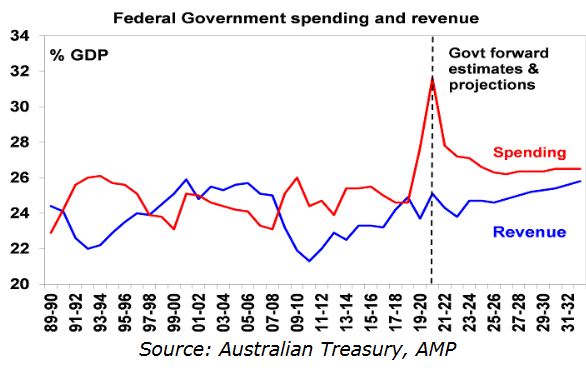
Here’s the budget deficits story vs GDP from 1900:
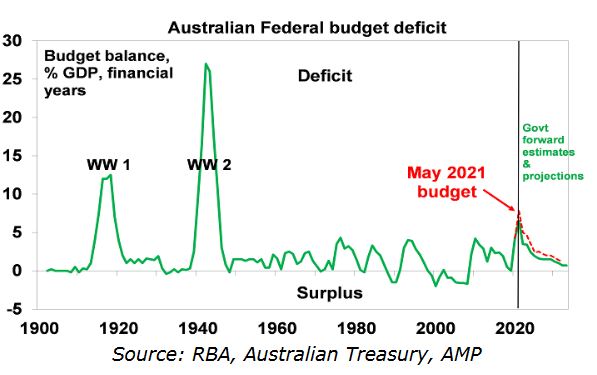
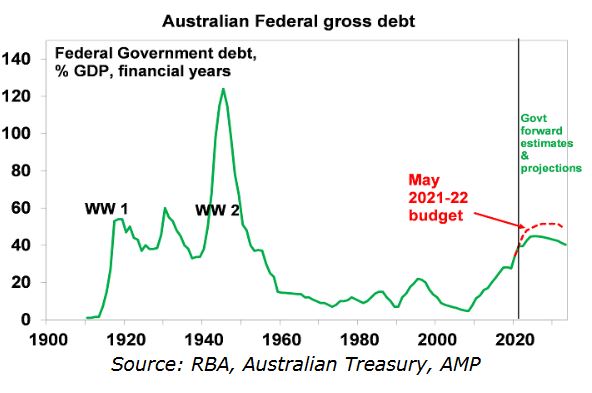
Oliver and Mousina say there is nothing in the budget to drive growth:
- economic growth is unlikely to be anywhere near strong enough to reduce the debt burden like it did in the post-WW2 period unless there is another immigration boom or 1980s style focus on boosting productivity – both of which look unlikely. In the meantime, the strategy would be highly vulnerable if anything came along to curtail the commodity boom.
So at some point tough decisions are likely to be required either to reduce spending as a share of GDP or raise taxes.
We don’t know what they think of Labor’s plans, because everyone, including ‘experts’ seems to think they are doing nothing. No-one looks at their documented policies.
There is real conversation to be had about whether we want to have bigger government in Australia. Alan Kohler has raised the issue a number of times, as in Oh Lord make us fiscally chaste, but not yet, says Morrison. He says The real story of the budget is that Treasury got the pandemic wrong. Treasury got it wrong, as did the Treasurer. They always do, it seems. He says:
- Spending this year, austerity later – but not yet announced of course. That might upset someone.
Labor severely constrained their ability to meet the crying needs of the poor by opting to keep the legislated tax cuts. Chalmers reckons he can nevertheless remake Australia, and welcomed a debate on how Labor plans to do it.
That won’t happen, but according to Newspoll at the end of the first week Labor has taken some bruises but retains a 53-47 lead. They have not bee completely derailed; but to win they need to show positive policy options to win.
Morrison confirmed on Saturday (AFR-Pay-walled):
- he was still committed to reforms in the policy areas of the government’s “omnibus” industrial relations bill that it was forced to jettison last year in the face of Labor and crossbench opposition.
It was thrown out because it would make workers more vulnerable.
In today’s AFR, Tony Sheldon, Labor Senator who chaired an inquiry into insecure week, confirms that the scourge is bad and getting worse. In many categories we are near worst in the OECD. In nursing homes only 6% of workers have secure jobs. The Minerals Council admits that labour hire casuals are paid 24% less that direct employees. Uber drivers, 120,000 of them, are not counted as employees, rather as contractors, and earn on average $13.65 per hour.
There is a clear distinction in the major parties as to whether all citizens and residents of Australia deserve a decent life, or whether the country should be divided into lifters and leaners, the worthy and unworthy, with the latter exploited and their lives made miserable in the interests of ‘flexibility’ in the labour market. Flexibility for employers, that is.
Why voters do not always vote in their own interests is a longer story, but in the 1970s, studying sociology, it was called the “internalization of ruling class values”.
Update: Here’s what came out when 50 economists were asked to pick the three most important issues for the election from a given list:
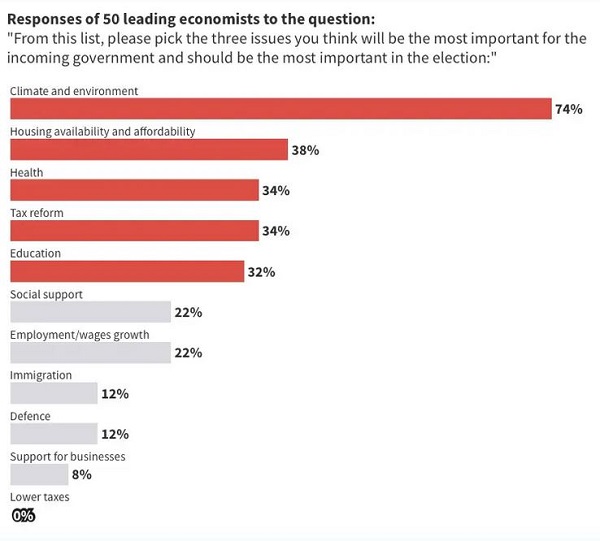

New post up.
I’ve updated the post with what came out when 50 economists were asked to pick the three most important issues for the election from a given list:
Here’s Newspoll. What you see there looks OK for Labor, but in the fine print Labor and the Coalition have each dropped a point to 36 and 35 respectively, while the Greens have gone from 10 to 12.
That may be just stirring of the tea leaves but a month ago the Greens were on 8. It might just mean something.
Other than that the big change was that in the personal ratings Morrison is now negative 9 instead of negative 12, while Albanese has gone from negative 3 to negative 14.
Chief political honcho at the Oz Simon Benson said that just when people seem to have decided they want a change of government, Albanese has made himself unelectable.
I would contest the “made himself”, but he may have a point.
Michelle Grattan has the detail and much more.
All this appears to have increased the odds for a hung parliament, which the Greens are depending on, but it’s early days.
Opposition Leader Anthony Albanese tests positive for COVID-19
This may not be a disadvantage. Richard Marles apart, most of the front bench would do a better job of selling the party’s wares.
I did not see the debate, but this report Scott Morrison’s attacks fall flat as Anthony Albanese wins first debate seems to be about right. 40 of the 100 undecided voters said they were more inclined to vote Labor, 35 were impressed with Morrison, and 25 remained undecided.
For both, they avoided a major clanger, although there was a lot of talk about PM sorry for offensive ‘blessed’ disability clanger. Personally, I’d accept his explanation, but the opposite of “blessed” is “cursed” and people of disability are commonly told that they are so I can see their sensitivity.
The real problem is that people on NDIS are having their packages cut in what seems an arbitrary way. On local radio, the first caller told of someone who asked for meals to be added. This triggered a review. As a result she did not get the meals and had her physio taken away.
She has rheumatoid arthritis.
This was followed by another half dozen or so callers with similar stories.
Dr Angela Jackson from Impact Economics and Policy explained to Richard Aedy why the costs are so high and how to make it more sustainable.
Hope Bill Shorten knows how, because the current mob don’t.